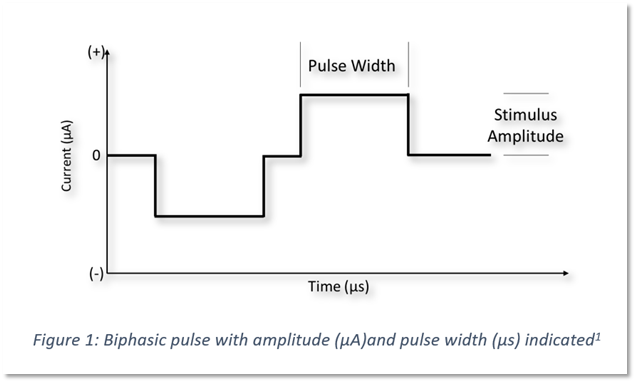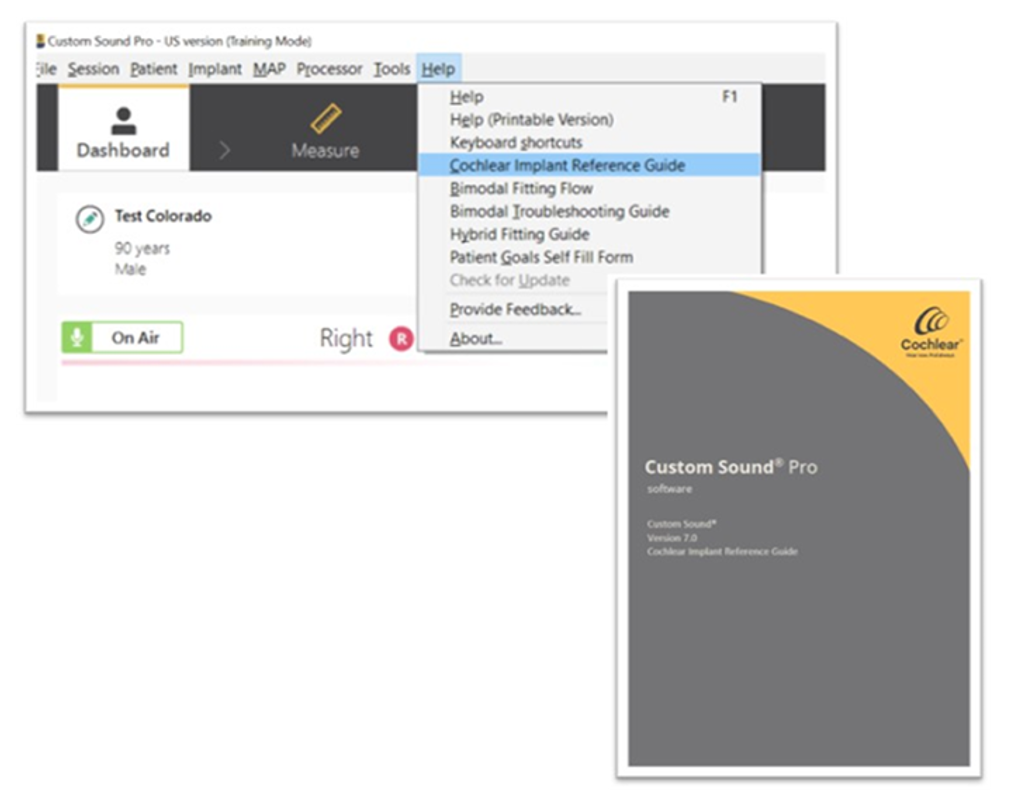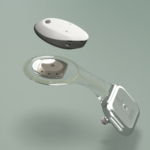- Approximately 5 minutes to read
- Learning objectives:
- Understand how pulse width affects loudness
- Understand when changing pulse width is recommended
- Understand the effects of changing pulse width
What is pulse width?
Each stimulation pulse delivered by the implant consists of two phases that have an equal negative and positive charge phase separated by a smaller interphase gap. These pulses are charge-balanced, making them safe for electrical stimulation of neural tissue. Pulse width is the duration of each phase, measured in microseconds, and refers to the amount of time the pulse is on (Figure 1). Charge, or the area under the pulse waveform, is what determines the loudness for patients and is the product of the pulse width times the stimulus amplitude. Therefore, loudness can be increased by either increasing the stimulus amplitude or increasing the pulse width.

When is changing pulse width indicated?
In most cases, the default pulse width will result in enough range for C levels to be set to loud. However, in some cases increasing the C profile enough to reach appropriate loudness may result in some channels being out of compliance (OOC). This means that further increases in current amplitude won’t result in additional current delivery or loudness growth. A research study simulated this effect by clipping the upper limit of stimulation and measuring its impact on speech recognition2. The study found that small amounts of clipping (15%) can significantly reduce speech perception in background noise, and larger amounts (30%) can lead to significantly poorer outcomes in both quiet and noisy environments.
Custom Sound® Pro software automatically detects out of compliance channels during programming and prompts the clinician to increase pulse width of the map (Figure 2). If the clinician agrees, the pulse width is widened automatically on all channels, and the map T and C levels are automatically reduced to maintain comfortable stimulation and the map profile. Maintaining a uniform pulse width across the entire map is recommended to permit the use of global adjustments.

What effects will changing pulse width have on stimulation?
If pulse width was increased due to electrodes being out of compliance, this will likely restore adequate loudness growth necessary for maximizing patients’ speech understanding.2
Secondly, research shows that widening pulse width can result in narrower spread of excitation3. This is also why increasing pulse width can be beneficial in cases of facial nerve stimulation.
Lastly, since stimulation parameters like pulse width, stimulation rate, and maxima are interconnected, changing one may require changes to the others. Our maxima default is 8 and we recommend keeping this and reducing the rate before reducing the maxima below 8. Custom Sound® Pro software manages these parameter dependencies by only permitting the selection of compatible combinations. For instance, when using perimodiolar electrodes with default settings of 900 Hz per channel, 8 maxima, and a 25 µs pulse width, the pulse width can be increased to 50 µs without needing other adjustments. However, if the pulse width is increased to 100 us, the rate must be reduced to 500 Hz per channel to allow sufficient time for the longer pulses to be delivered.
Key takeaways:
- Loudness is determined by charge and can be increased by either increasing the current level or widening the pulse width.
- Increasing loudness by widening pulse width can control current spread3.
- Widening the pulse width if prompted by the software will keep the system in compliance. NOTE: adjustment to the stimulation rate may be required

The “Cochlear Implant Reference Guide” is available within the Help menu of Custom Sound Pro® for further reading on programing principles and terminology.
- Z43470 ISS3 Nucleus Technical Reference Manual
- Saoji AA, Adkins WJ, Olund AP, Nelson-Bakkum ER, Koka K. Effect of exceeding compliance voltage on speech perception in cochlear implants. Hear Res. 2021;400:108112. doi:10.1016/j.heares.2020.108112
- Zhou N, Zhu Z, Dong L, Galvin JJ 3rd. Effect of pulse phase duration on forward masking and spread of excitation in cochlear implant listeners. PLoS One. 2020;15(7):e0236179. Published 2020 Jul 20. doi:10.1371/journal.pone.0236179


